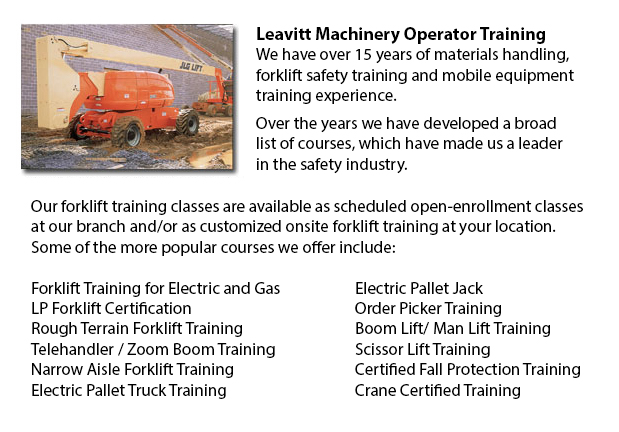
Vernon Aerial Platform Training - Aerial hoists are able to accommodate many tasks involving high and tricky reaching places. Sometimes used to execute regular preservation in buildings with lofty ceilings, prune tree branches, elevate heavy shelving units or repair phone lines. A ladder might also be utilized for some of the aforementioned projects, although aerial hoists offer more security and stability when correctly used.
There are a lot of models of aerial lift trucks available on the market depending on what the task needed involves. Painters often use scissor aerial hoists for instance, which are grouped as mobile scaffolding, handy in painting trim and reaching the 2nd story and above on buildings. The scissor aerial jacks use criss-cross braces to stretch and enlarge upwards. There is a platform attached to the top of the braces that rises simultaneously as the criss-cross braces lift.
Container trucks and cherry pickers are a different kind of aerial hoist. They possess a bucket platform on top of an elongated arm. As this arm unfolds, the attached platform rises. Lift trucks use a pronged arm that rises upwards as the handle is moved. Boom hoists have a hydraulic arm which extends outward and hoists the platform. All of these aerial platform lifts require special training to operate.
Training courses offered through Occupational Safety & Health Association, known also as OSHA, cover safety techniques, system operation, repair and inspection and device cargo capacities. Successful completion of these training programs earns a special certified license. Only properly qualified people who have OSHA operating licenses should operate aerial hoists. The Occupational Safety & Health Organization has developed guidelines to uphold safety and prevent injury while utilizing aerial lifts. Common sense rules such as not using this machine to give rides and ensuring all tires on aerial lifts are braced in order to hinder machine tipping are noted within the rules.
Sadly, figures illustrate that more than 20 operators die each year while working with aerial lifts and 8% of those are commercial painters. Most of these mishaps are due to inadequate tire bracing and the lift falling over; for that reason some of these deaths were preventable. Operators should make certain that all wheels are locked and braces as a critical security precaution to stop the device from toppling over.
Additional guidelines involve marking the encircling area of the machine in a visible manner to safeguard passers-by and to guarantee they do not approach too close to the operating machine. It is vital to ensure that there are also 10 feet of clearance between any utility cables and the aerial hoist. Operators of this apparatus are also highly recommended to always wear the appropriate security harness while up in the air.
-
Vernon Heavy Equipment Training Programs
Vernon Heavy Equipment Training Programs - At whatever given construction site, there are often different types of machinery which are ready to be used. These heavy and light machines need both operators to run them and mechanics to fix them. Trainee... More -
Vernon Forklift Safety Training
Vernon Forklift Safety Training - People wanting work in industries that operate lift trucks should undergo a forklift safety training program before becoming a certified operator of a lift truck. There are a lot of ways to go about acquiring forklif... More -
Vernon Aerial Boom Lift Ticket
Vernon Aerial Boom Lift Ticket - Aerial platform lifts can accommodate various odd jobs involving high and tough reaching places. Normally used to complete regular preservation in structures with tall ceilings, prune tree branches, elevate heavy shel... More -
Vernon Manlift Safety Training
Vernon Manlift Safety Training - Manlift operators need to be cognizant and aware of all the potential dangers which are associated with particular classes of scissor lifts. They need to be able to operate the scissor lift in a way that protects not... More -
Vernon Forklift License
Vernon Forklift License - Obtaining a forklift certification or forklift license in North America will require the one training to carry out hands-on training in addition to classroom instruction. The provincial, federal and state regulatory bodies a... More -
Narrow Aisle Forklift, Order Picker, Electric Pallet Jack, Electric Pallet Truck Certification in Vernon
A pallet lift is a model of equipment dedicated in the transporting of pallets of many dimensions and weights. They can be utilized as an appendage for forklifts, cranes and other styles of heavy machinery or be applied on their own. Pallet hoists ar... More -
Vernon Boom Lift Safety Training
Vernon Boom Lift Safey Training - Boom lifts are a type of elevated work platform or aerial lifting device which are commonly utilized in construction, industry, and warehousing. Boom lifts can be utilized in practically any surroundings because of t... More -
Vernon Manlift Operator Training
Vernon Manlift Operator Training - The aerial lift or manlift is a specialized kind of hydraulic platform that is designed to lift a person vertically giving it an alternate name of a vertical personnel lift. These machinery are widely utilized for a... More

Forklift Certification Vernon
TOLL FREE: 1-888-254-6157
Vernon, British Columbia
forkliftcertificationvernon.com
Email Us
About Us


